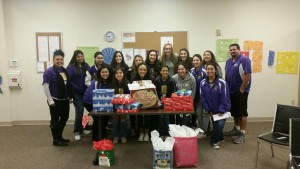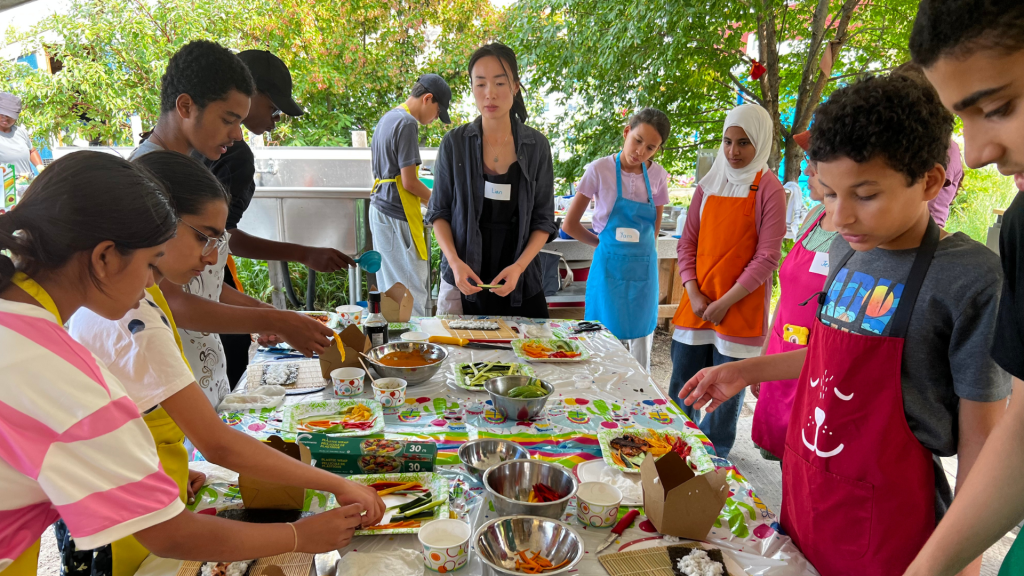By Erica Rascón on December 16, 2016 in Giving People
Many Americans are unaware of the prevalence of domestic violence in our communities. Domestic Violence Solutions (DVS) strives to educate the public while creating a pathway of hope for those who experience domestic abuse firsthand.
DVS is Santa Barbara County’s only full-service domestic violence agency, committed to ending the intergenerational cycle of domestic violence through prevention and intervention services. DVS provides the county’s only 24-hour shelter service, as well as the county’s only transitional housing program for domestic violence survivors. The necessity of these life-saving resources remains vastly unacknowledged.
During corporate outreach events, DVS Executive Director Charles Anderson often asks, “Do any of you know someone who has been a victim of domestic violence?” Audience members often shake their heads. Yet without fail, after the meetings, someone discretely approaches Anderson or his staff. They carry their secrets in tow.
“After one session, a woman came up and touched my arm,” Anderson recalls. “She said, ‘I was in your program eight years ago. If it wasn’t for you, I’d be dead.’ She worked in the office with all those people and none of them knew the struggle that she went through. People don’t tell anyone because they just want to move forward. Escaping can be hard enough.”
Escaping domestic violence can often be an arduous and dangerous journey for the victims. Many take the first step towards liberation after a tragic incident that requires police intervention. Until recent years, law enforcement focused solely on securing the aggressors. Victims were left without resources to move forward safely or confidently. At times, victims were even blamed for their role in their abuse.
In response, DVS applied for a was awarded a three-year Domestic Violence Emergency Response Team (DVERT) grant from the California Office of Emergency Services (Cal OES). Once law enforcement has apprehended the aggressor, DVS teams move in to support and educate the victim.
“They need to know what their rights and options are, first of all,” explains Anderson. “We make them aware of everything that is in the community to support them. We bring them to our shelter for protection, food, and safety. We make sure that the kids can stay in school. We also make sure that they have legal protection to get back on their feet and to come out of the situation as a whole person with dignity and self-respect. We want them to move from victim to survivor.”
With the support of Yardi, DVS extends assistance to clients in the Second Stage program. Clients can remain in a DVS shelter for 45 days. If further support is needed, they can move into the Second Stage program for transitional housing. For up to 18 months, clients receive assistance with job searching, parenting skills, managing finances, and clinical support. Children receive specialized counseling, play therapy, and after school care.
Anderson says, “We wouldn’t be able to do what we do without the support of Yardi. Every year, [clients] are able to build a stable life and reconfigure their families. Those who complete the program have a much better life. They can put domestic violence behind them.”
In 2014, DVS provided 10,676 nights of emergency shelter for women and children; answered 4,080 crisis calls; helped 887 victims get legal assistance and responded to 459 calls from local police.
While those figures reflect the necessity of DVS services, they barely scratch the surface. Between 85-90% of domestic violence victims do not seek the help that they need to end the cycle. Education and prevention programming assists those who do not speak up, as well as those who do not know that they are being abused.
DVS educational and preventative outreach plays a key role in our communities. Through simple tools like discussion groups, activities, and didactic materials, DVS gets students to think about domestic violence in their schools.
“In our dating quiz, we ask, ‘Has your boyfriend or girlfriend ever kicked, slapped, or humiliated you? Forced you to have sex? Pressured you to use substances? Are they jealous or over protective?’” says Anderson. “In a high school, they say that everyone sort of does that but the truth is that they shouldn’t.”
DVS challenges students to identify acts of domestic violence that they see as social norms. “The scary thing is that in high school, 25% of the young ladies will be hit, slapped, physically hurt or raped by a boyfriend or girlfriend. People believe what they see and experience as the norm. Part of our job is protecting victims and the other part is making people aware,” says Anderson.
Anderson and his teams at DVS work nonstop to end domestic violence in Santa Barbara County. To support prevention and intervention services through Domestic Violence Solutions, visit www.dvsolutions.org.


